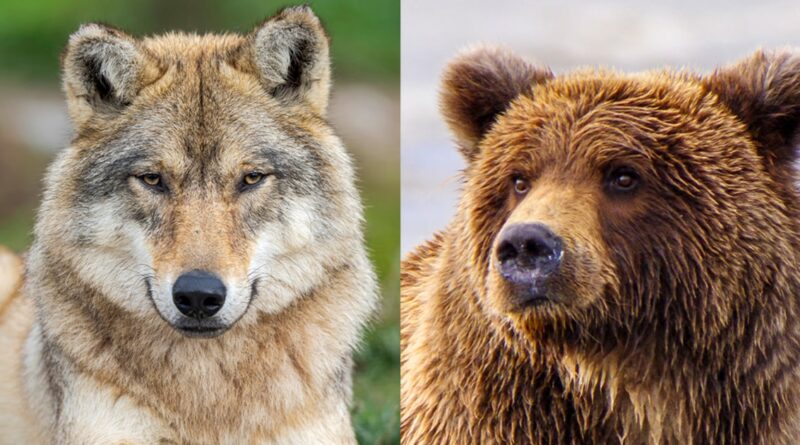Comments | Why environmentalists are so worried about Project 2025
Although former President Donald Trump has publicly distanced himself from the conservative Heritage Foundation’s infamous Project 2025 plan, we should take seriously much of what the 920-page document tells us about Trump’s second term.
Alternatively, if Trump wins in November, he could end federal protections for grizzly bears, gray wolves and grouse, as the document suggests delisting the three animals. federal government of endangered species.
A politically motivated group that makes decisions about protected and endangered species has the potential to cause many problems.
Environmental groups warn that removing species from the protected list could open them up to being hunted or killed by traps meant to protect farms and ranches as they face severe habitat loss.
It’s no wonder that a politically motivated group making decisions about protected and endangered species has the potential to cause a lot of trouble.
As Andrea Zaccardi, director of animal conservation law for the Center of Biological Diversity points out, “Proponents of the 2025 Agenda do not understand that species protection should be a science-based decision, not a political one.”
Signed into law by President Richard Nixon in 1973, the Endangered Species Act allows the federal government to protect endangered species from being killed, harmed or abused. Once the population has grown, the species can be wiped out, leaving protection in the hands of national governments that environmentalists argue cannot take strong enough action.
Deletion of endangered species must be done when government scientists think it is no longer necessary, but it is not unreasonable to become political again. Grizzly bears are a perfect example.
Before westward expansion, the lower 48 states had more than 50,000 grizzly bears, ranging from Central Mexico to the Great Plains. But by 1975, when they were officially listed as an endangered species, the number of grizzlies in the continental United States had dropped to less than 1,000.
Since then, it’s been a success story, with very successful efforts to reintroduce grizzlies in parts of Montana and three counties near Yellowstone National Park – two areas that Project 2025 wants to deleted. As of 2022, the Greater Yellowstone Ecosystem was estimated to have 965 bears, while the North Continental Divide in Montana was estimated to have 1,138 – triple the number in 1975.
But the population of grizzlies has not improved significantly in two other regional centers in Washington and Idaho.
Ivan London, a senior attorney at the Mountain States Legal Foundation, said in an email that the grizzly bear should not be listed under the Endangered Species Act in the first place. He argues that the government was wrong to divide the grizzly population into several protected areas and should have considered the total number of grizzlies in the entire United States.
“The Endangered Species Act has become a source of power that federal officials use to expand their access to private and public property. This allows them to perform police duties that they would otherwise not be able to do. and the power to oversee it,” London said in an email. “Several ESA listings are based on outdated or questionable information, making management decisions to list or continue to list many species illogical.
If these three species were to be removed from the list, the federal government would no longer have a say in protecting them. That would leave national governments in full control of their future.
For some list reviewers, that’s the point.
Mark Jones, national director of hunter access for Gun Owners of America, argues that the number of grizzly bears has increased enough that they should be wiped out, and any efforts to conserve them they exist because of national politics that interfere with science. Jones, a Wyoming resident and wildlife biologist, said that “undercut” the Endangered Species Act.
“There’s a lot of anger in Wyoming for the federal government because it’s ignoring its own law,” he said.
Idaho and Wyoming have already passed laws that would allow the hunting of grizzly bears if they are delisted.
But Zaccardi says there is good reason to doubt that the West will take strong enough action. He notes that Idaho and Wyoming have already passed laws that would allow the hunting of grizzly bears if they are exterminated, while there will be strong incentives for state lawmakers to allow mass killing of the bears. grizzlies and gray wolves, which will sometimes attack cattle and sheep.
“The agriculture industry doesn’t like predators very much,” he said.
Currently, grizzlies, gray wolves and sage grouse are protected from trophy hunters, ranchers and real estate developers. But that could change quickly if Trump wins in November. allowing politics to control a policy that has already been charged by politics.
Finally, although some species have met the criteria for removal, these species are too weak to be removed. It should be the responsibility of all concerned to keep animals under protection until science says it is not needed – not left to political and economic manifestos.
#Comments #environmentalists #worried #Project
